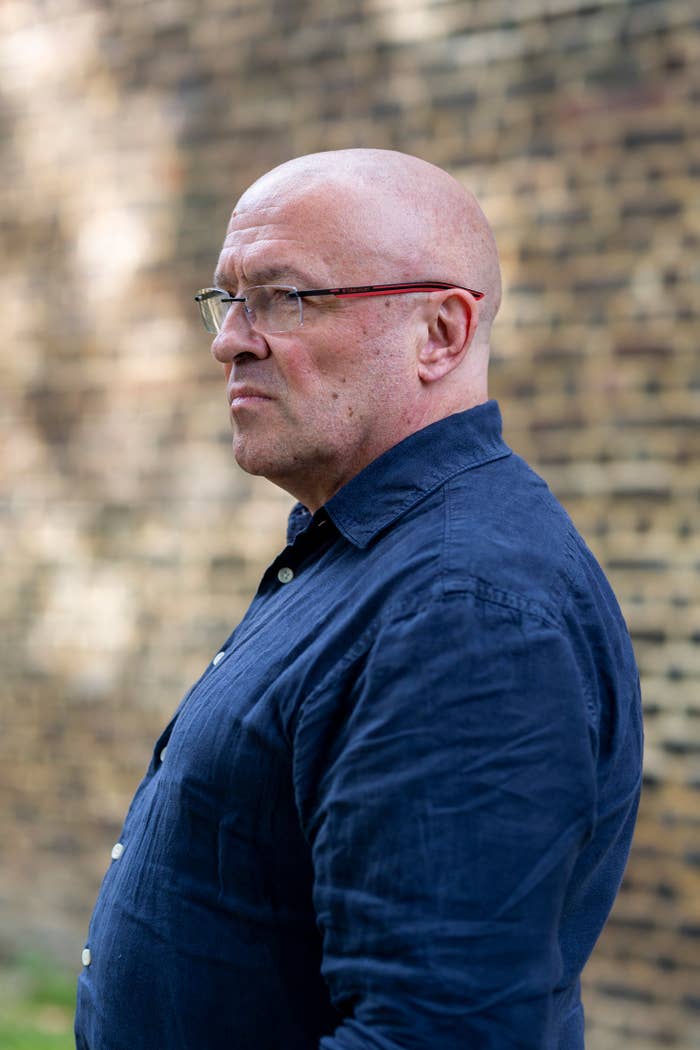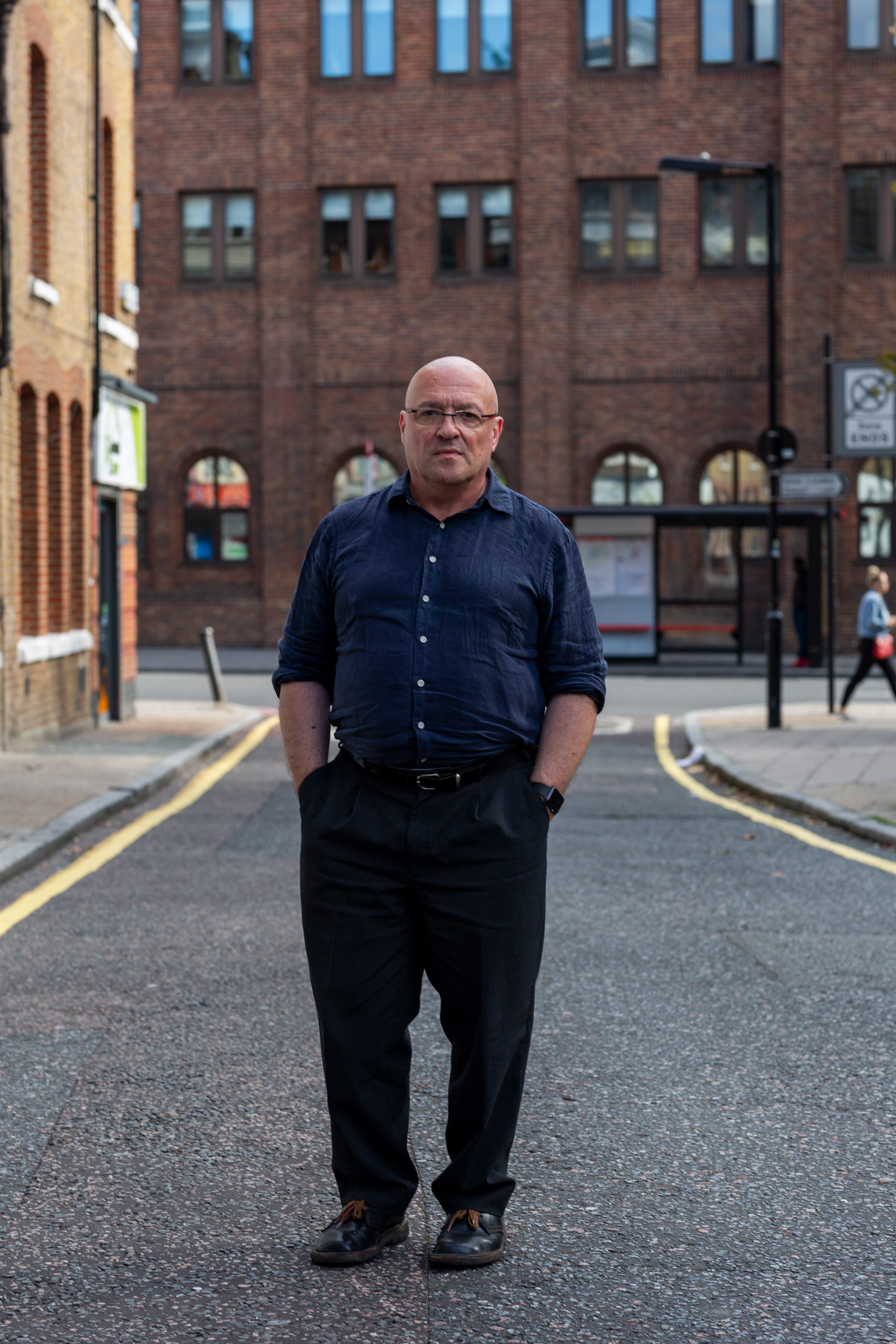The number of gay men committing crimes related to chemsex has risen so significantly that the prison and probation service has launched a designated chemsex programme that is now being considered for a national rollout, BuzzFeed News can reveal.
Dozens of probation officers in the London area have been given specialist training on chemsex, the courts have been supplied with an assessment tool to help identify defendants who commit offences in chemsex settings, and targeted support has been devised to keep offenders away from the drug-fuelled scene.
In an exclusive interview with BuzzFeed News, the architect of the scheme gave the first detailed account of the offences that chemsex is causing, the people perpetrating them, and how the authorities are trying to contain the rapidly growing problem.
Stephen Morris, Lead for Chemsex and Crime within the probation service, said the gay men coming before the courts for chemsex-related crimes are “as young as 17 right through to their fifties and sixties” and are being prosecuted for an array of offences, many of which take place in contexts never before seen by the courts.
Chemsex typically involves two or more men using drugs such as GHB, crystal methamphetamine, and mephedrone in private houses or clubs. The heightening and disinhibiting effects of these substances encourage more extreme sex and for longer periods — up to several days — while also frequently inducing psychotic episodes and overdoses. Amid this, multiple crimes flourish, including drugs offences and sexual and physical violence.

The London initiative was launched last year following the 2016 conviction of the serial killer Stephen Port, who used GHB in the rape and murder of four young men. The case prompted the Metropolitan Police to implement training for frontline officers to better understand the context of his crimes after heavy criticism of its investigation.
Last year, another high-profile chemsex murderer, Stefano Brizzi, who attempted to cannibalise his victim during a crystal meth binge, killed himself in prison.
Morris, who has consulted on both the Port and Brizzi cases, told BuzzFeed News that while some of the crimes are not new — rape, stalking, robbery, drug dealing, domestic violence, and carrying an offensive weapon — many are committed in novel settings in which the offenders are “seeking out the chemsex context in order to commission offences”.
These scenarios include the “livestreaming of real-time sexual abuse or sexual assault” through video conferencing platforms while viewers pay to order and watch particular acts.
“If you are having a chemsex party, you can show that across the world, and there are sites set up where people can access that,” said Morris. “People can pay to watch that and people can order what they want to have done.”
This can include, he said, “men being rendered unconscious while other people sexually assault them or rape them and that can be watched by many people.” Perpetrators, said Morris, are conspiring with others to organise these events.
Understanding these crimes and how chemsex drugs fuel them is essential so the justice system can get to grips with them, he said. “What we know about crystal meth in particular is it disinhibits behaviour so people engage in extreme ways of behaving that they would never do if they were sober,” he said. This includes, for example, gay men who have previously been chemsex drug users and are later caught wielding knives, baseball bats, and other offensive weapons in situations unconnected to chemsex events.
“There is a lot of paranoia, so people will feel persecuted even in ordinary social situations,” Morris said. “What we are learning is long after they have had a period of using [crystal meth] the paranoia will continue. There are features of psychosis — people hearing auditory hallucinations — which are often persecutory. So when someone is in that state they will do anything to protect themselves.”
The prison and probation service’s response was designed to enable the courts to deliver more appropriate sentencing and treatment to prevent reoffending, relapse into drug use, and suicide attempts. A year into the scheme, the authorities are still learning about the implications of chemsex, Morris said.
It was while working with sex offenders two years ago, after decades of doing so, that he began to notice a pattern emerging — an observation that triggered the entire innovation.

“More and more gay men were sitting before me, either to be assessed for the court or being referred to me by probation officers,” Morris said. Previously, he said, there were “hardly any”, but by then — 2016 — he was averaging two to three gay male clients per month, just in London.
At the time, the Port and Brizzi cases were gaining media attention, and the combination of these with his own cases persuaded Morris to re-examine the files of all those he had been working with in recent years, beyond the sex offenders.
“Sure enough, there was the chemsex context,” he said about the gay male cases. “It wouldn’t have been referred to [in the files] using that terminology but there was the substance use of crystal meth, GHB, and mephedrone.”
No one, however, had connected it all up. The police and the courts had isolated the crimes, but not understood the backdrop. In the prison and probation service “chemsex as a term was not being bandied around, was not really known about,” Morris said.
The justice system had to catch up. But despite the swelling problem, and the increasing awareness of the health implications of chemsex, no research had been carried out on the criminal ramifications or how to reduce them.
“I joined up the dots in terms of criminal behaviour and criminal justice,” said Morris. Convinced that urgent action was needed, he approached senior management within the Ministry of Justice, warned that this pattern of new cases was only going to increase, and suggested that a different response — a specialised chemsex strategy — was necessary to prevent more offending. The managers agreed. They advised him to apply to the MoJ’s “innovation fund” to launch the programme.
In the meantime he began delivering training to probation officers about chemsex, an intensive two-day immersion into every element of its causes and manifestations.
Together, Morris and his colleagues put the theory into practice, working with chemsex offenders — in prison and after their release — in an attempt to both treat them and better understand the problem. What they discovered, as the stories of offenders surfaced, had never before been seen: an unfathomable cycle of abuse, forged by multiple underlying social factors, amid a new crime dimension. His account reveals for the first time the challenges facing the justice system.

It proved to be a difficult, even dramatic process, in part because around 75% of chemsex criminals have never been in trouble before, or do not fully comprehend what they have done because the drugs have detached them from reality. Many lacked criminal intent, he said, and had a “naivety” about what they did.
Others remain in denial as a defence mechanism, shifting responsibility for their actions on to the drugs or trying to distance themselves from their actions. “It’s usually because they are very frightened,” said Morris. Some perpetrators have flashbacks and symptoms of post-traumatic stress disorder (PTSD) as they remember terrible things they did to others, particularly while on crystal meth.
Such intrusive memories create a trauma response, said Morris, because it “totally clashes with the sense of self that they had”. Someone, for example, who has otherwise behaved well towards others, and held down a job and a relationship, can begin to psychologically fracture when they realise what they were responsible for doing. As such, said Morris, trauma is an experience that threatens not only your sense of safety but also your sense of who you are.
Flashbacks, however, are then used — and useful — in the rehabilitation process as they can help people develop empathy towards their victims.
The sessions usually begin with officers asking what brought them to commit the offences. “That’s when we hear some of the most disturbing stories you can imagine of what they themselves have been through,” said Morris. “Unresolved trauma can repeat itself in all sorts of ways.”
This does not mean absolving them, though. Instead “we have to help someone take responsibility no matter what’s been done to them,” said Morris. “We also need to address their past trauma.”
The offenders’ personal circumstances often do not help. Some of the men were previously professionals with full lives that unravelled rapidly as the drugs led to criminality.
“The family, the job, all that can go overnight,” Morris said. “The partner may not have known until the police came knocking. The partner may be unwittingly implicated.”
Of the 52 individuals Morris’s team have been working with, three killed themselves.
The intervention, he explained, “looks at what’s underneath the surface and looks at that in a very structured way, and helps the person take responsibility, think about their behaviour, about why all this started, and gives them things to do to help them turn that around.”
Often, he said, chemsex offenders harbour significant shame and guilt that, given other compounding stresses, can prompt “self-medicating the discomfort” — turning to drugs. Many have “mixed knowledge about what constitutes consent and what doesn’t.” And some are so lonely and desperate to be part of a scene — a community of chemsex users — often following rejection from the broader, mainstream gay scene, that they will cave to peer pressure and enact group sexual violence to avoid being rejected for refusing to do so.
“With this group of people they may feel ‘this is where I belong; I can connect here,’ and if you don’t want to jeopardise that and become an outcast again, where are you going to go? Then you may compromise and do things that in another context you would not allow.” Morris emphasised repeatedly that understanding how and why chemsex crimes were committed is not, ever, to excuse them.

But as well as the vulnerable, “naïve”, or apparently ignorant criminals, over the last 12 months since the scheme was piloted, “new cases coming into the criminal justice system [involved] other people that did have criminal intent,” he said.
“They target, they groom, they network, they know where vulnerability is. They can do it in a very skilled way and they often get away with it for a very long time.”
These most calculating perpetrators included both individuals and groups orchestrating sexual violence through chemsex environments, sometimes filming it and sometimes profiting from it, “knowing it’s a fairly safe place to commit those offences because many men will not report the issue to the police because they don’t know how they will be implicated.”
For the most depraved offenders, the complexities of treatment mount. Only a small minority are true sociopaths devoid of empathy for their victims. Some, said Morris, can be those who have previously also been victims of chem-sexual violence, who rationalised and normalised what happened, using it to justify their own perpetration of such crimes.
He calls this “permission-giving thoughts”, and characterised the thinking as, “Well, someone did this to me two weeks ago — it’s OK for me to do it to someone else.”
But for many chemsex offenders, the point at which they face what they have done, fully admit it, and take responsibility can be the turning point, however hard it is.
“I can’t begin to describe the madness of people’s lives before that happens,” Morris said. “They would have almost lost touch with reality — the blurring of fantasy and reality is very powerful — and on top of that you have a deteriorating mental health state, mainly with crystal meth. So when all that stops and someone can say, ‘yes, I did this’ and get back in touch with that healthy part of themselves, there is often a great sense of relief.”
It can also lead to them wanting to make reparations for what they’ve done. Guilt, he said, becomes a “motivating factor for someone to make changes”.
The trouble is that, after prison, returning to their old life can prove bleak if there is little left of it: no job, no partner, and with friends vanished. This increases the risk of reentering the chemsex world as a means of escapism. Although the specialist probation officers can help with housing, psychological support, and medical assistance, ultimately, said Morris, “it’s their choice” whether to return to it.
He also looked at how well existing treatments for sex and drug offenders worked for chemsex criminals. Traditional sex offenders programmes “were not suitable”, he said, as they were so “heteronormative in their content”. In other words, they focused on men committing sexual violence against women (rather than men) and excluded the environments in which chemsex crimes were taking place.

Similarly, standard drug treatment programmes tended to revolve around heroin, cocaine, crack cocaine, and others drugs not favoured in chemsex circles, thereby preventing those in the programme being understood by those delivering it.
In response to all that he and his colleagues discovered, Morris devised a formal, structured approach. It comes in two parts.
The first is a “court assessment tool”: a template document that probation officers can use to ascertain whether chemsex featured in the offences. It uses “street language” to ask defendants about their chemsex substance use (crystal meth, for example, is often known as Tina, and GHB or GBL simply as G).
Knowing where there is heavy involvement in these drugs and the mental health implications of this enables the officers to provide the court with a picture of the causal factors involved.
“That means that a judge can make an informed choice of what to do with that person,” said Morris. It does not affect whether they go to prison or for how long, but rather, “what that experience is like once the sentence has been given” in order to get “the appropriate interventions for that person”.
This is where part two enters: a “rehabilitation toolkit” (the official name of which is the rehabilitation activity requirement chemsex toolkit, or RARCH). Judges will be able to include it as an obligatory part of the sentence. It is the first structured intervention by the prison and probation service for chemsex offenders, and will be implemented next month.
It will involve weekly, twice weekly, or monthly sessions with specially trained probation officers that unpick everything that contributed to their crimes in an attempt to prevent reoffending. That means looking at the underlying drug problems, issues with sexuality, understanding the crime and the effect on the victim, and what they can do to avoid repeating the offences.
This process could continue for years depending on how frequently the sessions are needed.

Morris has now submitted a proposal, which is now being examined by the Ministry of Justice, to have the London-wide scheme implemented across Britain. Already, the department has granted a £10,000 innovation award for the scheme to develop it further.
An academic institution is now considering long-term research into the programme’s efficacy. And a range of other bodies that help deal with the effects of chemsex, including health charities and sexual health clinics, have now joined up with the prison and probation service for regular meetings to discuss strategy and best practice, and, within strict parameters, share information.
One huge obstacle remains, however: the persisting reality of a homophobic culture, which, Morris said, few acknowledge, but which ensures chemsex continues to claim victims.
“We could fall into the trap of thinking that as gay men we have arrived,” he said, “because we can get married and occupy top positions in various professions, but when you scratch the surface — the high incidence of hate crime, the bullying in schools, the mental health and suicide rates of gay men — we have not arrived. And when these things remain unaddressed with a drip-drip effect of oppression and discrimination over a lifetime, it’s not going to end well. Chemsex is evidence of that. It’s a symptom.”
What the justice system is seeing is also merely the surface, he said. “I was saying a year ago that I felt we were seeing the tip of the iceberg and I’m still saying that.” With all the causes still raging, “I don’t think the issue is going away.”
